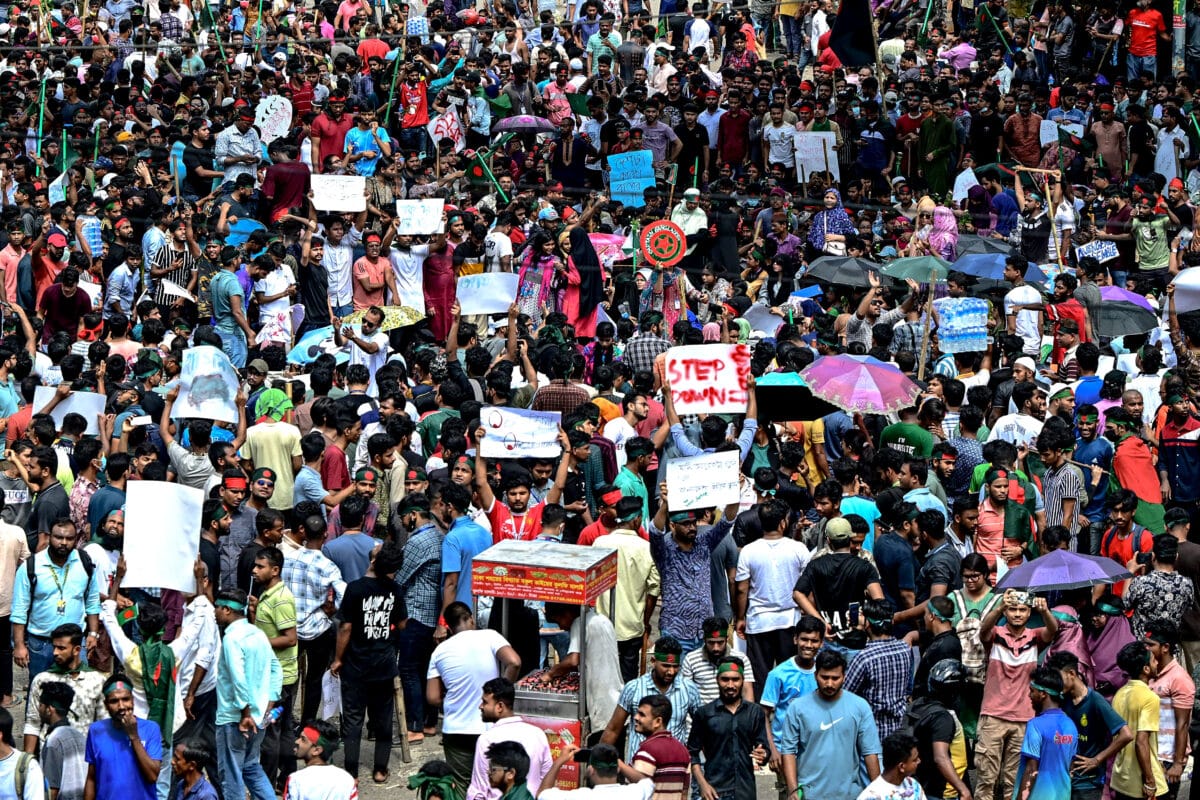

Protesters block the Shahbagh intersection during a protest in Dhaka on August 4, 2024 to demand justice for the victims arrested and killed in the recent nationwide violence during anti-quota protests. (Photo by Munir UZ ZAMAN / AFP)
Protests in Bangladesh that began as student-led demonstrations against government hiring rules have spiralled into violence, killing more than 280 people and sparking widespread calls for the premier to resign.
Here are five key dates spanning the protests posing a daunting challenge to the autocratic rule of 76-year-old Prime Minister Sheikh Hasina, leader of the South Asian nation of about 170 million people.
– July 1: Blockades begin –
University students build barricades blocking roads and railway lines to demand reforms of a quota system for sought-after public sector job hires.
They say the scheme is used to stack the civil service with loyalists of Hasina’s ruling Awami League.
Hasina, who won a fifth term as prime minister in January after a vote without genuine opposition, says the students are “wasting their time.”
– July 16: Violence intensifies –
The first recorded deaths are six people killed in clashes, a day after bitter violence when protesters and pro-government supporters in Dhaka fought with sticks and hurled bricks at each other.
Hasina’s government orders the nationwide closure of schools and universities.
– July 18: PM rebuffed –
Students reject an olive branch from Hasina, a day after she appeals for calm and vows that every “murder” in the protests would be punished.
Protesters chant “down with the dictator” and torch the headquarters of state broadcaster Bangladesh Television and dozens of other government buildings.
The government imposes an internet blackout.
At least 32 people are killed and hundreds are injured in clashes, which continue in the following days despite a round-the-clock curfew and the deployment of soldiers.
– July 21: Supreme Court verdict –
Bangladesh’s Supreme Court, seen by critics as a rubber stamp for the will of Hasina’s government, rules the decision to reintroduce job quotas was illegal.
But its verdict falls short of protester demands to entirely abolish job reservations for children of “freedom fighters” from Bangladesh’s 1971 independence war against Pakistan.
– August 4: Army stands with the people –
Hundreds of thousands of Bangladeshi protesters clash again with government supporters on Sunday. Police say at least 14 officers are among the 77 killed.
But in a stiff rebuke to Hasina, influential ex-army chief General Ikbal Karim Bhuiyan calls on the government to withdraw troops from the streets and condemns “egregious killings.”
That followed comments by current army chief Waker-uz-Zaman, who said the armed forces “always stood by the people,” without giving more details.
Leaders of the nationwide civil disobedience campaign call on supporters to march on the capital Dhaka on Monday for a “final protest.”
